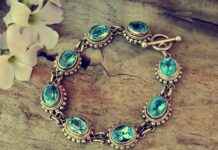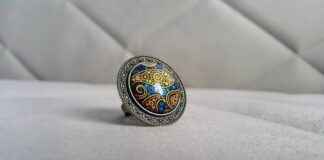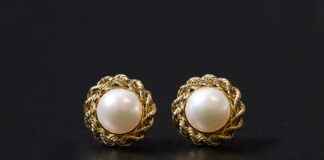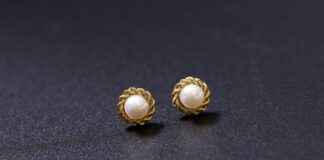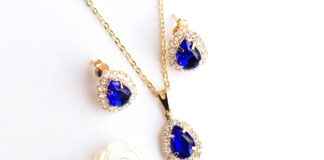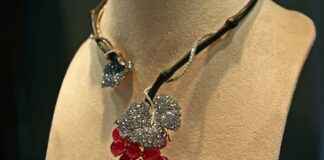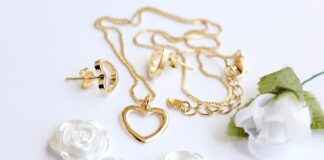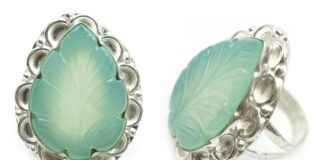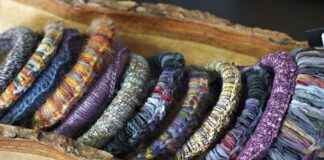This article delves into the growing trend of handmade jewelry, examining its importance in today’s fashion landscape and the myriad benefits it presents to both consumers and artisans in an ever-evolving market.
The Rise of Handmade Jewelry
In recent years, handmade jewelry has surged in popularity, primarily due to its distinctive designs and the personal touch that sets it apart from mass-produced items. Several factors contribute to this rise:
- Consumer Demand: Shoppers are increasingly seeking unique items that reflect their individuality.
- Artisan Stories: Many consumers are drawn to the narratives behind each piece, fostering a deeper connection.
- Social Media Influence: Platforms like Instagram and Pinterest have amplified the visibility of handmade pieces.
Benefits of Choosing Handmade Jewelry
Opting for handmade jewelry offers a range of advantages:
- Quality Craftsmanship: Artisans invest time and skill into each creation, ensuring high-quality products.
- Ethical Sourcing: Many artisans prioritize sustainable materials, promoting environmental responsibility.
- Support for Local Artisans: Buying handmade supports small businesses and local economies.
Sustainability in Handmade Jewelry
As sustainability becomes a critical concern in fashion, handmade jewelry often embodies eco-friendly practices:
- Ethical Sourcing of Materials: Artisans frequently use materials that are responsibly sourced.
- Eco-Friendly Production Methods: Many makers utilize techniques that minimize environmental impact.
How to Choose the Right Handmade Jewelry
Selecting the perfect piece can be daunting. Here are some tips:
- Identifying Quality Craftsmanship: Look for signs of meticulous work and attention to detail.
- Finding Reputable Artisans: Research and connect with trusted makers for a satisfying purchasing experience.
The Future of Handmade Jewelry in Fashion
As fashion trends continue to evolve, handmade jewelry is set to maintain its significance. Its unique charm and connection to artisans ensure that it remains a cherished choice for consumers seeking authenticity in their accessories.

The Rise of Handmade Jewelry
has become a significant trend in the fashion industry, captivating consumers with its distinctiveness and charm. Unlike mass-produced jewelry, handmade pieces offer a unique aesthetic that reflects the individuality of both the artisan and the wearer. This section delves into the various factors contributing to the increasing popularity of handmade jewelry.
- Personalization: One of the most appealing aspects of handmade jewelry is the ability to customize designs. Artisans often work closely with clients to create pieces that resonate with personal stories, making each item not just an accessory, but a cherished memory.
- Quality Craftsmanship: Handmade jewelry is typically crafted with a level of care and attention to detail that mass-produced items lack. Artisans invest time in perfecting their techniques, ensuring that each piece is not only beautiful but also durable.
- Connection to Artisans: Purchasing handmade jewelry fosters a direct relationship between the buyer and the maker. Consumers appreciate knowing the story behind their jewelry, which enhances the emotional value of the pieces.
- Support for Local Economies: Buying handmade supports local artisans and small businesses, contributing to the economic health of communities. Consumers are increasingly aware of the impact their purchasing decisions have on local economies.
- Sustainability: Many artisans prioritize eco-friendly practices in their production processes. By using sustainable materials and methods, handmade jewelry aligns with the growing consumer demand for environmentally responsible products.
In conclusion, the rise of handmade jewelry is driven by a combination of factors that resonate with modern consumers. From the desire for unique, personalized items to the commitment to sustainability and community support, handmade jewelry represents a shift towards more meaningful and responsible fashion choices.

Benefits of Choosing Handmade Jewelry
Choosing handmade jewelry offers numerous advantages that extend beyond mere aesthetics. This unique form of adornment is not only a statement of personal style but also embodies values that resonate deeply with conscious consumers. Below, we explore the key benefits of opting for handmade jewelry.
- Quality Craftsmanship: Handmade jewelry is often characterized by meticulous attention to detail. Artisans dedicate time and skill to create each piece, ensuring a level of quality that mass-produced items often lack. This commitment to craftsmanship results in jewelry that is not only beautiful but also durable, making it a worthwhile investment.
- Ethical Sourcing: Many artisans prioritize sourcing materials ethically, which means they often use sustainable and responsibly sourced components. This practice reduces the environmental impact associated with mining and manufacturing, aligning with the values of eco-conscious consumers.
- Support for Local Artisans: Purchasing handmade jewelry directly supports local artisans and small businesses. This not only helps to sustain local economies but also fosters a sense of community. Consumers can feel good knowing their purchases contribute to the livelihoods of skilled craftsmen and women.
- Unique Designs: Each piece of handmade jewelry is distinct, allowing individuals to express their personal style. Unlike mass-produced items, which can be found in every store, handmade jewelry offers a sense of exclusivity and individuality.
- Emotional Connection: Buying handmade jewelry often creates a personal connection between the buyer and the creator. Knowing the story behind a piece and the artisan’s passion can enhance the sentimental value of the jewelry.
In conclusion, choosing handmade jewelry not only elevates one’s personal style but also supports ethical practices and local economies. As consumers become increasingly aware of the impact of their choices, handmade jewelry stands out as a meaningful and stylish option.
Quality Over Quantity
is a fundamental principle that defines the essence of handmade jewelry. Unlike mass-produced items, which often prioritize speed and volume, handmade jewelry reflects a commitment to craftsmanship and attention to detail. Artisans invest significant time and effort into perfecting each piece, ensuring that the final product is not only beautiful but also durable.
The process of creating handmade jewelry involves a variety of techniques that highlight the artisan’s skill. Each piece is often crafted using traditional methods, which may include metalworking, stone setting, and enameling. These techniques require a deep understanding of materials and an artistic vision, resulting in jewelry that tells a story and carries a unique character.
One of the most significant advantages of handmade jewelry is its longevity. Because artisans prioritize quality, the materials used are often of a higher grade compared to mass-produced alternatives. This attention to detail ensures that the jewelry can withstand the test of time, both in terms of physical durability and style. Consumers can feel confident that their investment in handmade pieces will yield returns in the form of lasting beauty and wearability.
Moreover, the value of handmade jewelry extends beyond its physical attributes. Each piece represents the artisan’s passion and dedication, often making it a meaningful addition to a person’s collection. When consumers choose handmade jewelry, they are not just purchasing an accessory; they are acquiring a piece of art that embodies the creator’s vision and skill.
In conclusion, the emphasis on quality over quantity in handmade jewelry not only enhances the overall value and longevity of each piece but also fosters a deeper connection between the consumer and the artisan. This connection is what makes handmade jewelry a cherished choice in today’s fashion landscape.
Unique Designs
In the realm of fashion, handmade jewelry stands out for its ability to offer unique and personalized designs that reflect the wearer’s individuality. Unlike mass-produced pieces, each item crafted by artisans carries a distinct story, showcasing the creative freedom that these skilled makers possess. This uniqueness is not just about aesthetics; it embodies the passion and dedication that goes into each design.
Artisans often draw inspiration from various sources, including nature, culture, and personal experiences. This results in a diverse range of styles, from intricate beadwork to minimalist metal designs, ensuring that there is something for everyone. The variety of materials used—such as gemstones, recycled metals, and sustainable materials—further enhances the individuality of each piece.
- Personal Expression: Wearing handmade jewelry allows individuals to express their personal style and values. It becomes a reflection of their identity, making each piece a conversation starter.
- Artistic Collaboration: Many artisans welcome customer input in the design process, creating a collaborative experience. This not only enhances the uniqueness of the piece but also fosters a deeper connection between the artisan and the buyer.
- Limited Editions: Many handmade jewelry makers produce limited quantities of their designs. This exclusivity adds to the allure of owning a piece that few others have, making it even more special.
Moreover, the trend towards customization has gained momentum. Consumers are increasingly seeking out pieces that can be tailored to their preferences, whether it be through personalized engravings or choosing specific color combinations. This level of customization is often unattainable in mass-production settings, further solidifying the appeal of handmade jewelry.
In conclusion, the unique designs offered by handmade jewelry not only allow for personal expression but also support the artisan’s creative journey. As consumers continue to seek out pieces that tell a story, the allure of handmade jewelry is likely to grow, ensuring its place in the future of fashion.
Personal Connection
Purchasing handmade jewelry is not just about acquiring a beautiful piece; it’s about forging a deep emotional connection between the buyer and the artisan. When you choose to buy directly from a creator, you are engaging in a unique experience that transcends traditional shopping. This connection is built on the story behind each piece, the passion of the artisan, and the shared appreciation for craftsmanship.
Unlike mass-produced jewelry, every handmade item carries a narrative. Each piece is often inspired by the artisan’s personal experiences, cultural heritage, or artistic vision. When consumers learn about the story behind a piece, they feel more connected to it and the person who made it. This emotional bond can transform a simple accessory into a cherished item that holds special significance.
- Understanding the Craft: Many artisans are eager to share their creative process, allowing buyers to appreciate the time and effort that goes into each piece. This transparency fosters a greater appreciation for the artistry involved.
- Building Relationships: Purchasing from local artisans often leads to lasting relationships. Customers may return to the same creator for future purchases, creating a sense of community and loyalty.
- Supporting a Dream: By buying handmade, you are directly supporting an artisan’s passion and livelihood, making your purchase feel more meaningful.
Moreover, this personal connection often extends beyond the transaction. Many artisans engage with their customers through social media, sharing updates about their work and involving them in the creative process. This ongoing interaction enhances the sense of belonging and connection, making the buyer feel like they are part of something special.
In conclusion, the emotional aspect of purchasing handmade jewelry is significant. It transforms a simple act of buying into a rewarding experience that celebrates individuality, craftsmanship, and community. Embracing this personal connection not only enriches the consumer’s experience but also supports the artisans who pour their hearts into their creations.
Supporting Local Artisans
is not just a trend; it is a movement that emphasizes the importance of community and the impact of our consumer choices on small businesses. When you choose to buy handmade jewelry, you are directly contributing to the livelihoods of skilled artisans in your area. This choice fosters a sense of community and strengthens local economies.
Handmade jewelry is often crafted with passion and dedication, reflecting the unique style and culture of the artisan. By purchasing these pieces, you are not only acquiring a beautiful item but also supporting the artist’s craft and their ability to sustain their business. This is particularly vital in a world where mass production often overshadows individual creativity.
Moreover, buying from local artisans encourages the preservation of traditional techniques and cultural heritage. Many artisans use methods passed down through generations, ensuring that these skills are not lost in the face of industrialization. By supporting them, you help keep these traditions alive.
Additionally, the economic impact of supporting local artisans cannot be overstated. When money is spent within the community, it circulates and contributes to the overall economic health of the area. This can lead to job creation, increased local investment, and a more vibrant community. Small businesses often reinvest in their local areas, contributing to schools, parks, and community events.
Furthermore, purchasing handmade jewelry allows consumers to make ethical choices. Many artisans prioritize sustainable practices, using ethically sourced materials and eco-friendly production methods. This conscious consumerism not only benefits the artisans but also promotes environmental responsibility.
In conclusion, supporting local artisans by buying handmade jewelry is a powerful way to make a positive impact. It fosters community, preserves cultural heritage, and contributes to a sustainable economy. By choosing handmade, you are not just buying a product; you are investing in a better future for both artisans and the communities they serve.
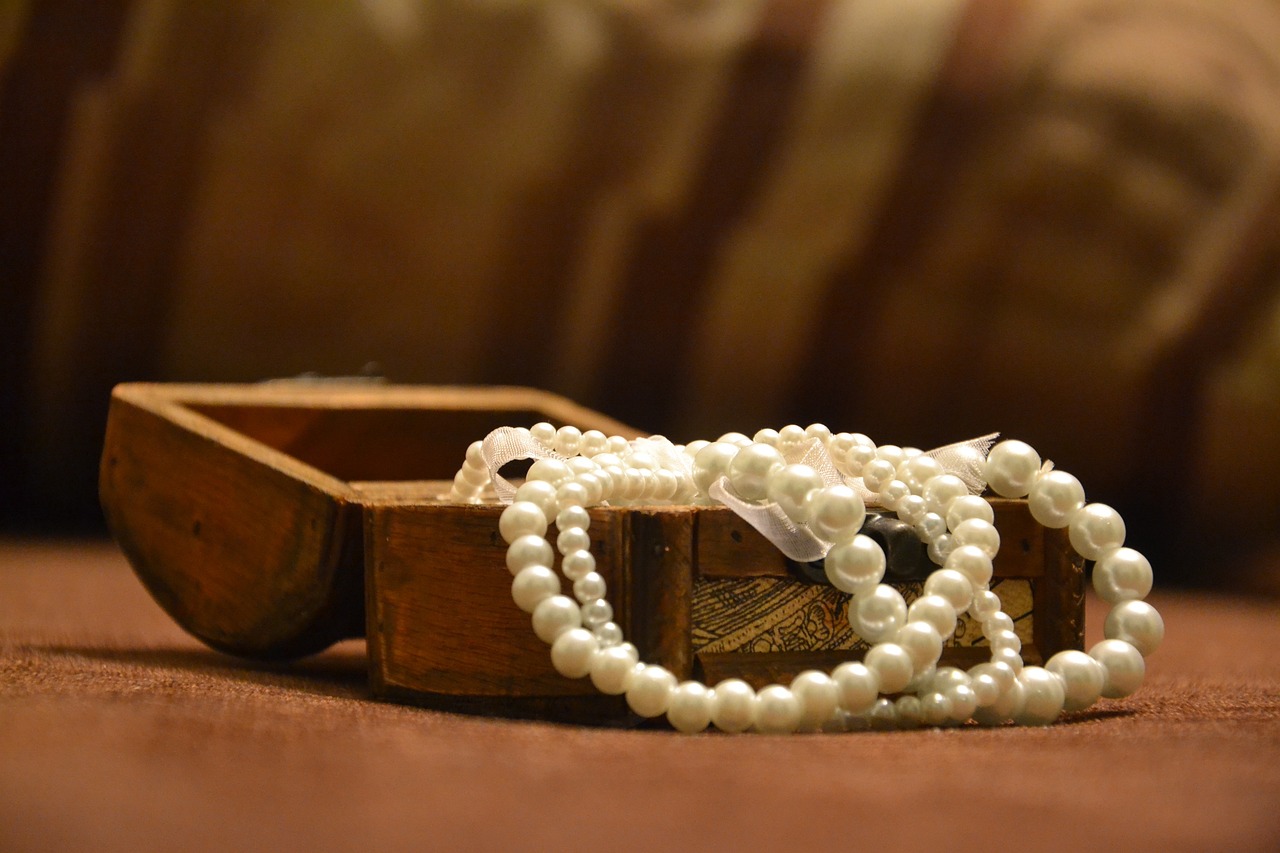
Sustainability in Handmade Jewelry
Sustainability has become a pivotal concern within the fashion industry, and handmade jewelry frequently embodies eco-friendly practices. Artisans are increasingly aware of their environmental footprint, leading to innovative approaches that prioritize sustainability.
One of the key aspects of sustainable handmade jewelry is the use of ethical materials. Artisans often source their materials from suppliers who adhere to fair trade practices, ensuring that the resources are obtained responsibly and without harming the environment. This not only supports ethical labor practices but also promotes a circular economy, where materials are reused and recycled.
- Recycled Metals: Many artisans utilize recycled metals, which significantly reduces the need for new mining operations that can devastate ecosystems.
- Natural Gemstones: Instead of synthetic alternatives, artisans often opt for natural gemstones that are ethically mined, ensuring minimal environmental disruption.
- Biodegradable Materials: Some jewelers are experimenting with biodegradable materials, such as wood or plant-based resins, further reducing their ecological impact.
In addition to sourcing materials responsibly, the production methods used in handmade jewelry are typically more sustainable than those of mass-produced items. Many artisans employ techniques that minimize waste and energy consumption. For instance, they may use traditional crafting methods that require less machinery, or implement practices that allow for the reuse of scrap materials.
Moreover, the local production of handmade jewelry contributes to sustainability by reducing transportation emissions. By purchasing locally made pieces, consumers can support their community while also making a positive environmental impact.
In conclusion, the commitment to sustainability in handmade jewelry not only reflects a growing consumer demand for eco-friendly products but also highlights the role of artisans in fostering a more sustainable future for the fashion industry. As awareness continues to rise, the integration of sustainable practices in handmade jewelry will likely become a significant trend.
Ethical Sourcing of Materials
is a crucial aspect of the handmade jewelry movement, reflecting a growing awareness among artisans and consumers alike regarding the environmental and social impacts of their choices. In an era where sustainability is becoming increasingly important, artisans are making a conscious effort to select materials that are not only beautiful but also responsibly sourced.
One of the key reasons why ethical sourcing is prioritized by artisans is its role in reducing the overall environmental impact. By choosing materials that are sustainably harvested or recycled, artisans can significantly minimize their carbon footprint. This commitment to sustainability is not just a trend; it’s a movement towards a more responsible fashion industry.
Transparency in sourcing practices is essential. Consumers today are more informed and concerned about where their products come from. They want to know the story behind the materials used in their jewelry. Artisans who provide this transparency often gain a loyal customer base, as buyers appreciate knowing that their purchases support ethical practices. This connection fosters trust and encourages consumers to make more informed choices.
Moreover, ethical sourcing extends beyond just the materials. It also encompasses fair labor practices. Many artisans ensure that the workers involved in the production process are treated fairly and compensated appropriately. This holistic approach not only benefits the environment but also contributes to the well-being of communities.
In conclusion, the importance of ethical sourcing cannot be overstated in the handmade jewelry sector. As consumers continue to demand more sustainable and transparent practices, artisans who prioritize these values will not only thrive but also pave the way for a more ethical and responsible fashion industry.
Eco-Friendly Production Methods
Many artisans in the handmade jewelry industry are increasingly adopting eco-friendly production techniques to reduce their ecological footprint. These methods not only benefit the environment but also appeal to a growing consumer base that values sustainability and ethical practices. Below are some of the key techniques employed by these artisans:
- Recycled Materials: Many jewelry makers utilize recycled metals and materials in their creations. By sourcing materials from previously used items, they significantly decrease the demand for new resources, thereby conserving energy and reducing waste.
- Natural Dyes: Instead of synthetic dyes, artisans often opt for natural dyes derived from plants, minerals, and other organic sources. This practice minimizes chemical runoff and promotes a healthier ecosystem.
- Low-Impact Tools: Many handmade jewelry creators use tools and equipment that require less energy to operate. This includes hand tools over electric ones, which not only lowers energy consumption but also enhances the artisanal quality of the pieces.
- Sustainable Packaging: To further their commitment to sustainability, many artisans use eco-friendly packaging materials. This includes biodegradable or recyclable options that reduce plastic waste and promote responsible consumer behavior.
- Local Sourcing: By sourcing materials locally, artisans reduce the carbon footprint associated with transportation. This also supports local economies and fosters community ties.
In conclusion, the adoption of eco-friendly production methods in the handmade jewelry sector is a testament to the artisans’ commitment to sustainability. By choosing these practices, they not only create beautiful pieces but also contribute positively to the environment, making handmade jewelry a truly responsible choice for consumers. As the demand for sustainable products continues to rise, these methods will likely become even more prevalent in the industry.

How to Choose the Right Handmade Jewelry
Selecting the perfect handmade jewelry can be overwhelming due to the vast array of options available. However, with the right approach, consumers can make informed decisions that lead to satisfying purchases. Here are some practical tips to consider:
- Understand Your Style: Before diving into the world of handmade jewelry, take a moment to reflect on your personal style. Consider what colors, materials, and designs resonate with you. This self-awareness will guide you in selecting pieces that complement your wardrobe and personality.
- Research Artisans: Look for artisans who specialize in handmade jewelry. Check their portfolios or social media pages to get a sense of their style and craftsmanship. Reading reviews and testimonials can also provide insights into their reliability and quality.
- Ask About Materials: Quality materials can significantly impact the durability and appearance of jewelry. Inquire about the types of metals, gemstones, and other materials used in the pieces you are considering. Artisans often take pride in using ethically sourced materials, which can enhance the value of your purchase.
- Examine Craftsmanship: Pay attention to the details. Look for signs of quality craftsmanship, such as smooth finishes, secure settings for stones, and overall attention to detail. A well-crafted piece will not only look better but also last longer.
- Consider Customization: Many artisans offer customization options, allowing you to create a piece that is uniquely yours. Whether it’s a specific design, size, or engraving, personalized jewelry can add sentimental value to your purchase.
- Budget Wisely: Handmade jewelry can vary widely in price. Set a budget before you start shopping, but be open to investing a bit more for high-quality pieces. Remember, handmade items often reflect the time and effort artisans put into their work.
By following these tips, you can navigate the world of handmade jewelry with confidence and find pieces that truly resonate with you. Embrace the uniqueness and artistry of handmade creations, and enjoy the journey of selecting jewelry that reflects your individuality.
Identifying Quality Craftsmanship
When it comes to selecting handmade jewelry, is crucial for buyers. The intricate nature of handmade pieces often reflects the skill and dedication of the artisan, making it essential to understand what to look for. This section delves into the key characteristics that define quality craftsmanship in handmade jewelry.
- Materials Used: Quality craftsmanship starts with the choice of materials. Look for jewelry made from high-grade metals like sterling silver, gold, or platinum, as well as natural gemstones that add value and uniqueness to each piece.
- Attention to Detail: A hallmark of skilled artisans is their meticulous attention to detail. Examine the finishing touches, such as smooth edges and precise settings for stones. Well-crafted pieces should feel comfortable and look polished.
- Durability: Handmade jewelry should be built to last. Assess the strength of the construction, including secure clasps and well-joined components. Quality craftsmanship ensures that the piece can withstand daily wear without compromising its integrity.
- Artistic Design: The creativity behind the design is a significant aspect of quality craftsmanship. Each piece should reflect the artisan’s unique style and vision, offering something that is not only beautiful but also distinctive.
- Artisan’s Reputation: Researching the artisan’s background can provide insights into their craftsmanship. Look for reviews and testimonials from previous customers, which can help gauge the trustworthiness and skill level of the maker.
In conclusion, recognizing quality craftsmanship in handmade jewelry involves a blend of examining materials, design, and the artisan’s reputation. By keeping these characteristics in mind, buyers can make informed decisions and invest in pieces that not only enhance their style but also stand the test of time.
Finding Reputable Artisans
When it comes to purchasing handmade jewelry, locating trustworthy artisans is essential for ensuring a positive buying experience. The world of handmade jewelry is vast and diverse, making it crucial for consumers to identify artisans who uphold quality and integrity. Below are some effective strategies to help you connect with reputable jewelry makers:
- Research Online: Utilize social media platforms like Instagram and Pinterest to discover artisans showcasing their work. Look for those with a strong following and positive engagement from customers.
- Read Reviews: Check online marketplaces and artisan websites for customer reviews and ratings. Feedback from previous buyers can provide valuable insights into the quality and reliability of the artisans.
- Attend Craft Fairs: Visiting local craft fairs and artisan markets allows you to meet jewelry makers in person. This face-to-face interaction can help you gauge their passion and commitment to their craft.
- Ask for Recommendations: Reach out to friends, family, or community groups who have experience with handmade jewelry. Personal recommendations can lead you to trustworthy artisans.
- Evaluate Their Work: Take the time to examine the quality of the jewelry pieces. Look for attention to detail, craftsmanship, and unique designs that reflect the artisan’s skill.
- Inquire About Sourcing: A reputable artisan will be transparent about where they source their materials. Ask questions about their practices to ensure they align with your values.
By following these tips, you can confidently navigate the world of handmade jewelry and establish connections with artisans who are dedicated to their craft. This not only enhances your buying experience but also supports the vibrant community of jewelry makers.

The Future of Handmade Jewelry in Fashion
As we navigate through an era of rapid change in the fashion landscape, handmade jewelry is emerging as a vital player in shaping future trends. This evolution is not merely a fleeting moment; it reflects a deeper cultural shift towards valuing authenticity and individuality in fashion choices.
One of the most significant factors contributing to the rise of handmade jewelry is the growing consumer demand for unique and personalized items. Unlike mass-produced alternatives, handcrafted pieces offer a story, a connection, and an emotional resonance that resonates with modern shoppers. This desire for personalization is driving artisans to innovate and create designs that reflect individual identities.
Moreover, the ongoing relevance of handmade jewelry is closely tied to the increasing awareness of sustainability in the fashion industry. As consumers become more conscious of their purchasing decisions, they are gravitating towards products that are ethically sourced and environmentally friendly. Artisans often prioritize sustainable materials and eco-friendly production methods, making their creations attractive to eco-conscious buyers.
The personal connection that comes with purchasing handmade jewelry cannot be overlooked. When consumers buy directly from artisans, they are not just acquiring a piece of jewelry; they are fostering a relationship with the creator. This emotional bond enhances the overall experience and encourages customers to support local economies.
Looking ahead, the future of handmade jewelry in fashion appears bright. As trends evolve, we can expect to see a surge in collaborations between artisans and fashion designers, leading to innovative collections that blend traditional craftsmanship with contemporary aesthetics. The demand for handmade pieces is likely to grow, making them a staple in the wardrobes of fashion-forward individuals.
In conclusion, the significance of handmade jewelry in the future of fashion cannot be overstated. It embodies a movement towards sustainability, individuality, and emotional connection that resonates with consumers today. As we embrace this shift, handmade jewelry is set to play an increasingly prominent role in the fashion narrative.
Frequently Asked Questions
- What makes handmade jewelry unique?
Handmade jewelry is unique because each piece is crafted individually by artisans, allowing for distinctive designs that reflect personal style. Unlike mass-produced items, every handmade piece tells a story and showcases the artisan’s creativity.
- Why should I choose handmade jewelry over mass-produced options?
Choosing handmade jewelry supports local artisans and promotes ethical sourcing and craftsmanship. It often emphasizes quality over quantity, ensuring that each piece is made with care and attention to detail, which can lead to longer-lasting items.
- How can I find reputable handmade jewelry artisans?
To find reputable artisans, consider browsing local craft fairs, artisan markets, or online platforms dedicated to handmade goods. Look for reviews and testimonials from previous customers to ensure a positive buying experience.
- Is handmade jewelry environmentally friendly?
Many artisans prioritize sustainability by using ethically sourced materials and eco-friendly production methods. This commitment helps reduce the environmental impact associated with jewelry making, making it a more responsible choice for consumers.
- What should I look for in quality craftsmanship?
When assessing quality craftsmanship, check for attention to detail, durability, and the finishing of the piece. Look for smooth edges, secure clasps, and overall aesthetics that demonstrate the artisan’s skill and dedication.







